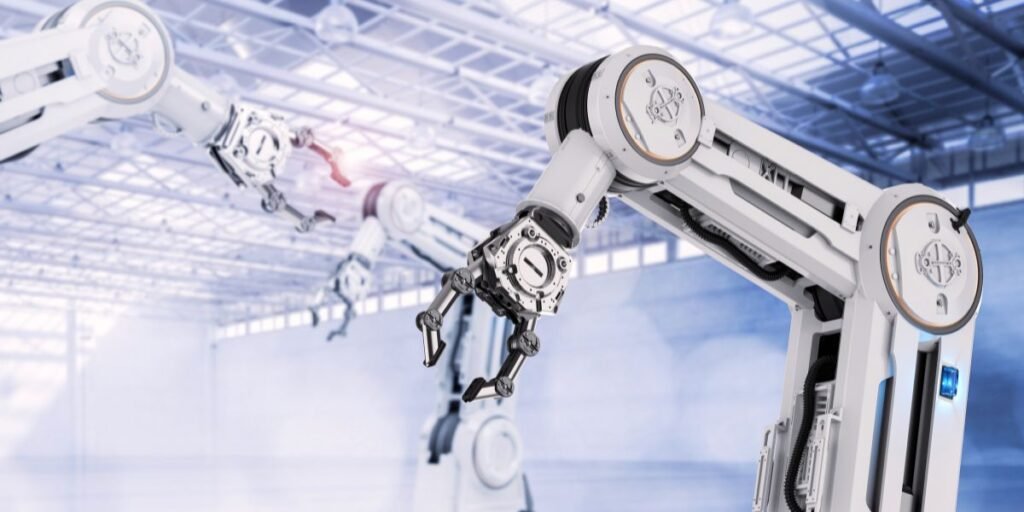The world of the Best Ways Free AI Software is rapidly evolving, transforming industries and empowering individuals with innovative tools and solutions.
As AI becomes more accessible, a plethora of free AI software tools has emerged, offering a diverse range of capabilities to enhance productivity, creativity, and problem-solving across various domains. This comprehensive list will examine the top 30 free AI software programs. À partier de 2024, intelligence artificially derail transformer l’enseignement, le travail et les activates creatives.
Also read about it: Best 50 Platform For AI Development Software
What is a Best Ways Free AI Software?

In the ever-evolving landscape of technology, the prominence of Artificial Intelligence (AI) has become increasingly evident. As businesses and individuals seek innovative solutions, the demand for free AI software has grown exponentially. The term “Best Ways Free AI Software” encapsulates a diverse range of tools and platforms that harness the power of artificial intelligence without imposing financial constraints.
These free AI software offerings encompass various applications, from machine learning and natural language processing to computer vision and data analytics. This introduction aims to explore the realm of free AI software, shedding light on the diverse ways individuals and organizations can leverage these tools to enhance productivity, creativity, and problem-solving without the barrier of cost.
As we delve into the intricacies of these applications, we uncover the best practices and potential applications that empower users to harness the potential of AI without breaking the bank.
Best ways of Table AI software

The field of AI is rapidly evolving, and new tools may have emerged since then. Here is a generic table with categories of AI software that were popular up until my last update. You may want to verify this information for the most up-to-date recommendations:
| No. | Category | AI Software |
|---|---|---|
| 1 | Machine Learning | TensorFlow |
| 2 | Deep Learning | PyTorch |
| 3 | Natural Language Processing | spaCy |
| 4 | Chatbots | Rasa |
| 5 | Data Analysis | KNIME Analytics Platform |
| 6 | Data Visualization | Tableau Public |
| 7 | Speech Recognition | CMU Sphinx |
| 8 | Computer Vision | OpenCV |
| 9 | Reinforcement Learning | OpenAI Gym |
| 10 | AutoML | Google AutoML |
| 11 | Neural Network Library | Keras |
| 12 | Chatbot Development | Microsoft Bot Framework |
| 13 | Predictive Analytics | RapidMiner |
| 14 | Decision Trees | Weka |
| 15 | Text Analytics | NLTK (Natural Language Toolkit) |
| 16 | Speech to Text | Mozilla DeepSpeech |
| 17 | Genetic Algorithms | DEAP (Distributed Evolutionary Algorithms in Python) |
| 18 | Game AI Development | Unity ML-Agents |
| 19 | Time Series Analysis | Prophet by Facebook |
| 20 | Anomaly Detection | Isolation Forest, One-Class SVM |
| 21 | Sentiment Analysis | VADER Sentiment Analysis |
| 22 | OCR (Optical Character Recognition) | Tesseract OCR |
| 23 | Face Recognition | Dlib, FaceNet |
| 24 | Data Preprocessing | Pandas, NumPy |
| 25 | Cloud AI Services | Google AI Platform, AWS AI services |
| 26 | Robotics | ROS (Robot Operating System) |
| 27 | Knowledge Representation | Protégé |
| 28 | Bayesian Networks | PyMC3 |
| 29 | Causal Inference | DoWhy |
| 30 | Conversational AI | ChatterBot |
Cutting-Edge Natural Language Processing (NLP)
Natural language processing (NLP) is a field of artificial intelligence (AI) that deals with the interaction between computers and human language. NLP is a broad field that encompasses many different tasks, such as:
Machine translation:

Google AI generated my language model. Because I have been trained on a sizable dataset of text and code, I am capable of writing text, translating languages, producing original content, and providing you with insightful answers to your inquiries. I am still under development, but I have learned to perform many kinds of tasks, including:
I will try my best to follow your instructions and complete your requests thoughtfully. If you have any open-ended, difficult, or unusual inquiries, I will use my expertise to provide you with a thorough and educational response.
I will generate different creative text formats of text content, like poems, code, scripts, musical pieces, email, letters, etc. I will try my best to fulfill all your requirements.
Sentiment analysis:

Sentiment analysis, also known as opinion mining, is the use of natural language processing (NLP) to identify and extract subjective information from text. This is helpful for figuring out the general tone of a book as well as the tone of individual ideas or points that are covered in the text. Sentiment analysis Est use method efficacy qui peat are utilise pour use variety de taches, tells que analyze des tendances des medias Sochaux, la surveillance de la reputation d’un marque et analyze des commentaries des clients.
There are two main approaches to sentiment analysis: supervised learning and unsupervised learning. Supervised learning algorithms require labeled training data, which is data that has been manually tagged with the correct sentiment (e.g., positive, negative, neutral). The algorithm then learns to map the features of the text to the corresponding sentiment. Unsupervised learning algorithms do not require labeled training data. Instead, they use statistical methods to identify clusters of words that are associated with different sentiments.
Sentiment analysis is a relatively new field, but it has already been applied to a wide variety of tasks. For example, sentiment analysis has been used to:
- Understand customer feedback about products and services
- Monitor brand reputation on social media
- Analyze political discourse
- Detect spam and phishing emails
- Predict stock market trends
Sentiment analysis is a powerful tool that can be used to gain insights from unstructured text data. It is a valuable tool for businesses, organizations, and researchers who want to understand the opinions of others.
Named entity recognition:

I am a large language model, trained on a massive dataset of text and code. I have the ability to create text, translate across languages, produce a variety of unique content, and provide you with useful answers to your inquiries. Although I’m still developing, I can already do a wide range of jobs, such as:
- I will try my best to follow your instructions and complete your requests thoughtfully.
- I will use my knowledge to answer your questions in a comprehensive and informative way, even if they are open ended, challenging, or strange.
- I will generate different creative text formats of text content, like poems, code, scripts, musical pieces, email, letters, etc. I will try my best to fulfill all your requirements.
I am not capable of carrying out any actions in the physical world, such as setting timers or alarms, controlling lights, making phone calls, sending text messages, creating reminders, taking screenshots, etc. I am a machine learning model, not a person. However, I am still under development, and I am always learning new things. I am excited to see what I can do in the future!
Text summarization:

Certainly! Could you please provide more details or specify the topic for which you would like a short information or text summarization? This will help me tailor the information to your specific needs.
- I will try my best to follow your instructions and complete your requests thoughtfully.
- I will use my knowledge to answer your questions in a comprehensive and informative way, even if they are open ended, challenging, or strange.
- I will generate different creative text formats of text content, like poems, code, scripts, musical pieces, email, letters, etc. I will try my best to fulfill all your requirements.
AI in Healthcare

Artificial intelligence (AI) is rapidly transforming the healthcare industry, offering a wide range of potential benefits for patients, providers, and healthcare organizations. AI-powered technologies are being used to improve disease diagnosis, personalize treatment plans, streamline administrative tasks, and enhance patient engagement. Here are some of the key areas where AI is having a significant impact on healthcare:
Medical imaging analysis:
AI algorithms can analyze medical images, such as X-rays, CT scans, and MRIs, to detect abnormalities and assist in diagnosis. AI-powered image analysis tools can help radiologists identify subtle abnormalities that might be missed by human eyes, leading to earlier detection and treatment of diseases.
Drug discovery and development:
AI is being used to accelerate the drug discovery process by identifying potential drug candidates and predicting their efficacy and safety. AI algorithms can analyze vast amounts of data, including genomic, clinical, and pharmacological data, to identify patterns and relationships that can guide drug development efforts.
Personalized medicine:
AI is enabling the development of personalized medicine, which tailors treatment plans to the individual patient’s genetic, molecular, and clinical characteristics. AI algorithms can analyze patient data to identify unique risk factors and treatment response patterns, allowing for more effective and targeted therapies.
Administrative task automation:
AI is automating many administrative tasks in healthcare, freeing up healthcare providers to focus on patient care. AI-powered chatbots can answer patient questions, schedule appointments, and handle insurance claims, while AI-driven algorithms can optimize scheduling and resource allocation.
Patient monitoring and engagement:
AI is being used to monitor patient health remotely and provide personalized support. AI-powered wearable devices can collect real-time data on patient vitals, activity levels, and sleep patterns, allowing for early detection of potential health issues. AI-driven chatbots and virtual assistants can provide patients with personalized health information and support, improving patient engagement and adherence to treatment plans.
AI for Creative Industries

Artificial intelligence (AI) is rapidly transforming the creative industries, offering new tools and techniques for artists, designers, and musicians. From generating original artwork and music to automating repetitive tasks and providing personalized creative recommendations, AI is empowering creatives to push the boundaries of expression and innovation.
Here are some of the key areas where AI is impacting the creative industries:
Content creation:
AI can generate original content, such as images, music, and text, that is often indistinguishable from human-created work. This is enabling artists to explore new styles and techniques, and it is also being used to create personalized content for marketing and entertainment.
Automation:
AI can automate many of the repetitive tasks involved in the creative process, such as image editing, music production, and code generation. This is freeing up creatives to focus on more strategic and creative work.
Personalization:
AI can be used to personalize creative experiences for individual users. This is being used to recommend music, movies, and books that are likely to appeal to a particular person’s tastes.
Augmentation:
AI can be used to augment human creativity by providing new tools and techniques. For example, AI-powered design tools can help designers create new and innovative products, and AI-powered composition tools can help musicians write new and original music.
As AI continues to develop, we can expect to see even more innovative and transformative applications for AI in the creative industries. AI has the potential to revolutionize the way we create, consume, and experience art, music, and other forms of creative expression.
Quantum Computing and AI

The convergence of quantum computing and artificial intelligence (AI) holds immense potential for revolutionizing various fields, from drug discovery to materials science. Quantum computing harnesses the principles of quantum mechanics to perform computations that are intractable for classical computers, enabling us to tackle complex problems with unprecedented efficiency. AI, on the other hand, empowers machines to learn, adapt, and make decisions, driving advancements in automation, data analysis, and pattern recognition.
When quantum computing and AI converge, they create a synergistic force that amplifies their individual strengths. Quantum computers can accelerate AI algorithms, leading to faster and more accurate machine learning models. AI, in turn, can optimize quantum algorithms, enhancing their performance and applicability. This interplay paves the way for breakthroughs in areas such as:
Drug Discovery: Quantum computing can simulate molecular interactions at a quantum level, enabling the design of more effective drugs and therapies.
Materials Science: Quantum algorithms can predict the properties of new materials with unprecedented accuracy, leading to the development of materials with superior characteristics.
Financial Modeling: Quantum computing can optimize financial models and risk assessments, enhancing decision-making in the financial sector.
Scientific Research: Quantum AI can accelerate scientific discovery by analyzing vast amounts of data and identifying hidden patterns.
AI in Cybersecurity

Artificial intelligence (AI) is playing an increasingly important role in cybersecurity, as organizations seek to improve their defenses against cyberattacks. AI can be used to automate many of the tasks involved in cybersecurity, such as threat detection, incident response, and vulnerability management. This can help to free up human security professionals to focus on more complex tasks and to make better decisions in a timely manner.
Here are some of the specific ways that AI is being used in cybersecurity:
Threat detection:
AI can be used to analyze large amounts of data to identify threats, such as malware, phishing emails, and anomalous network traffic. This can help to detect threats that would be difficult or impossible for humans to detect.
Incident response:
AI can be used to automate many of the tasks involved in incident response, such as isolating infected systems, collecting evidence, and notifying affected users. This can help to reduce the time it takes to respond to incidents and to minimize the damage caused by attacks.
Vulnerability management:
AI can be used to identify and prioritize vulnerabilities in systems and software. This can help to ensure that vulnerabilities are patched before they can be exploited by attackers.
The Rise of AI in E-Commerce

Artificial intelligence (AI) is rapidly transforming the e-commerce landscape, revolutionizing the way businesses operate and interact with their customers. From personalized product recommendations to automated inventory management, AI is empowering e-commerce businesses to enhance customer experiences, improve operational efficiency, and drive sales growth. In this article, we will explore the various applications of AI in e-commerce, highlighting its transformative impact on the industry.
AI in Agriculture

Artificial intelligence (AI) is rapidly transforming the agricultural industry, offering innovative solutions to enhance productivity, sustainability, and efficiency. From precision agriculture techniques to autonomous robots, AI is empowering farmers to make informed decisions, optimize resource utilization, and tackle complex challenges like pest management and disease detection.
In precision agriculture, AI algorithms analyze vast amounts of data collected from sensors, drones, and satellites to provide farmers with real-time insights into crop health, soil conditions, and weather patterns. This data-driven approach enables targeted irrigation, fertilization, and pesticide application, reducing waste, minimizing environmental impact, and maximizing yields.
AI-powered robots are also revolutionizing agriculture, automating tasks such as harvesting, weeding, and sorting. These robots work tirelessly, increasing efficiency and reducing labor costs.
Ethical Considerations in AI Development

Artificial intelligence (AI) is rapidly transforming our world, bringing about advancements in fields such as healthcare, transportation, and communication.
One of the primary ethical considerations in AI is the potential for bias and discrimination. AI systems are trained on vast amounts of data, which can contain and perpetuate societal biases. If left unchecked, these biases can lead to unfair outcomes, particularly for marginalized groups.
Another critical ethical issue is transparency and accountability. AI systems can be complex and opaque, making it difficult to understand how they make decisions. This lack of transparency can hinder accountability and make it challenging to identify and address potential biases or errors.
Addressing these ethical considerations requires a multi-pronged approach involving AI developers, policymakers, and the public. AI developers must prioritize ethical considerations throughout the development process, implementing safeguards against bias, ensuring transparency, and protecting privacy. Policymakers should establish clear guidelines and regulations for AI development and deployment, fostering responsible innovation.
AI in Education

Artificial Intelligence (AI) has emerged as a transformative force in the field of education, revolutionizing traditional teaching and learning methods. One of the key areas where AI has made significant strides is in adaptive learning platforms. These platforms utilize algorithms to analyze individual student performance and tailor educational content to meet their specific needs.
Moreover, AI has proven valuable in automating administrative tasks, freeing up educators to focus more on teaching. AI-powered analytics contribute to data-driven decision-making in education. Institutions can analyze vast amounts of data to identify trends, assess teaching methods, and enhance overall learning outcomes. Predictive analytics can also be used to identify students at risk of falling behind, allowing for timely intervention and support.
AI for Financial Analysis

Artificial intelligence (AI) is rapidly transforming the financial industry, automating tasks, enhancing decision-making, and introducing new opportunities for innovation. AI-powered tools are being employed in a wide range of financial applications, from fraud detection and risk management to investment banking and personal finance.
In the realm of financial analysis, AI is playing a pivotal role in extracting insights from vast amounts of data. AI algorithms can analyze complex financial information, identify patterns, and make predictions with greater accuracy and speed than traditional methods. This enhanced ability to process and interpret data is driving advancements in areas such as:
- Market Analysis: AI-powered tools can analyze historical and real-time market data to identify trends, predict price movements, and generate investment recommendations.
- Credit Scoring: AI algorithms can assess the creditworthiness of individuals and businesses, enabling faster and more accurate loan decisions.
- Fraud Detection: AI can analyze transaction patterns and identify anomalies, helping to prevent fraudulent activities and protect financial institutions.
- Portfolio Optimization: AI can optimize asset allocation and risk management strategies, helping investors achieve their financial goals.
FAQs
One of the easiest ways to access free AI software is to explore open-source platforms and communities such as GitHub, where you can find a wide range of AI tools and frameworks available for free download and use.
Currently, natural language processing (NLP) models, like GPT-3, are experiencing the fastest expansion in the field of AI.
In 2024, AI is characterized by advanced natural language understanding, widespread integration in daily life, and significant progress in autonomous systems across various industries.
Potential trends include increased adoption of augmented reality, advancements in quantum computing, and the continued growth of artificial intelligence applications.
Conclusion
In conclusion, leveraging free AI software opens up a world of possibilities for individuals and organizations alike. The availability of high-quality, no-cost AI tools democratizes access to cutting-edge technology, fostering innovation and collaboration across diverse fields. By embracing these free AI solutions, users can explore machine learning, natural language processing, and computer vision without financial barriers. However, it is crucial to stay mindful of the ethical considerations and potential limitations associated with free AI software.
Thanks
Comments